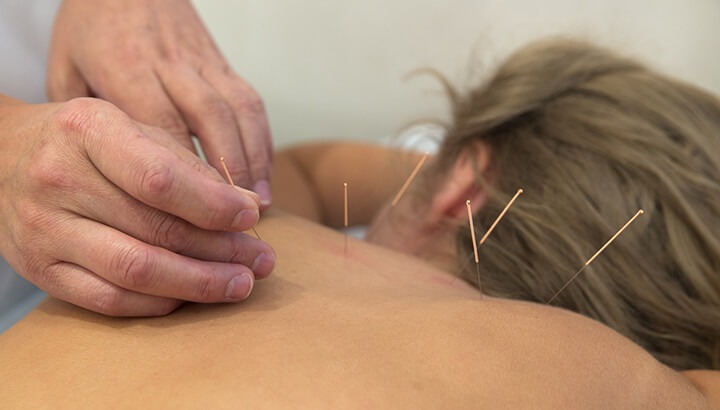Mainstream medicine views the body through the lens of Western science, a view that has led to remarkable advancements in medical research and technology. It’s a view that I embrace, and one which has guided my career for decades. But it’s not the only view there is. The body (and the symptoms and illnesses that occur within it) look quite a bit different when viewed through the lens of Chinese medicine. From that perspective, our physical body is more like a pathway of multiple channels of energy that flow through us like rivers.
Western medicine broadly defines health as the absence of disease. But in Chinese medicine, health is more than just not being sick. Health is seen as a harmonious balancing of opposing energies. From this perspective of Chinese medicine, disease is believed to be caused by disruptions of Qi, a term that refers to the vital energy that flows through all things.
As you might expect, many practitioners trained in Western science or medicine will scoff at the idea of herbal remedies, acupuncture, and metaphysical concepts like Qi or energy meridians. For them, I’d like to offer some perspective… and some evidence.
Acupuncture and Chinese medicine have been around for a very, very long time (thousands of years) and have been used to treat vastly more people than any other medical system by far. Although the persistent use of a system over centuries suggests that it is probably effective, the history and the widespread usage of acupuncture does not prove that it works… so let’s take a look at some of the more recent science on the subject as relates to the management of pain.
The Evidence in Favor of Acupuncture
Available medical literature contains substantial evidence which demonstrates that acupuncture is both safe and effective for pain management. A recent meta-analysis, which was cited by Dr. Farshad M. Ahadian (a clinical professor of anesthesiology at the University of California) at the 28th Annual Meeting of The Academy of Integrative Pain Management, is a case in point. This rigorous review, which was published in 2017 and sponsored by The National Institute for Health Research in the UK, examined 29 of the highest-quality clinical trials involving acupuncture. All told, these studies involved more than 18,000 patients.
Summarizing the findings, Dr. Ahadian noted that, “Right now, we have a pretty solid foundation for the efficacy of acupuncture,” for chronic pain caused by conditions such as osteoarthritis, headaches (including migraines), and musculoskeletal problems. Additional studies, I might add, have found acupuncture helpful for emotional well-being, depression, post-operative recovery and the pain associated with some types of cancer.
Acupuncture — An Alternative Form of Pain Management?
Pain management is an increasing challenge for our society. The problem is at least twofold. We have an aging population, which means that more people are suffering from degenerative conditions, neuropathy, and other diseases that cause chronic pain. Second, many of the pharmaceuticals used to manage pain (particularly opioids) are compounding matters because they can be addictive and they do nothing to address the underlying medical issues for which people are taking them.
Takeaway
I believe anyone experiencing chronic pain should consider consulting with a licensed acupuncturist. The art of acupuncture (and the concepts it is based on) may seem a bit foreign to our Western minds. However, I think it’s very much worth pointing out that Chinese medicine has been in existence for more than 4,000 years. It’s emphasis on plant-based remedies and all-natural healing techniques makes it seem much less “alternative” when you think about it more globally and historically.
By the way, the idea that the universe is suffused with a vital energy called Qi is not as far out or foreign as it sounds. Practitioners of Ayurvedic medicine and yoga refer to something similar called prana, Polynesian healers talk about mana, ancient Hebrew scribes described a force called Ruah, and Christians speak of the Holy Spirit. Conventional medicine may have little room for such concepts, but the fact that virtually every culture has a name for a transcendent and non-visible spirit is compelling indeed.
Modern science, incidentally, has a name for non-visible transcendent energies, also. They are called quantum fields. It’s beyond the scope of this article to speculate on the relationship between quantum fields and the human body, but I find it extremely intriguing that scientists are beginning to investigate electromagnetic therapies (based on quantum theory) for pain management. Conventional medicine is starting to get pretty far out!
Acupuncturists believe that the human body contains subtle fields of energy, and that every organ has its own Qi, which flows through channels called meridians. According to these practitioners, a disease manifests when this free flow of energy is disrupted. The acupuncturist’s goal is to apply needles at the appropriate meridians to help restore the balance of the energy circulating throughout the body.
The metaphysical ideas that underlie acupuncture are interesting. But for me, the most important question is — does it work? The evidence is quite persuasive that it does, particularly as an adjunct or complementary therapy. The science is supported by what I see in my office every day. There are two clinical acupuncturists that work in my clinic, and every day I see steady streams of patients coming in with pain and leaving without it. We still have a lot to learn about how this ancient practice works… but it works.
Be well,
Dr. Josh









